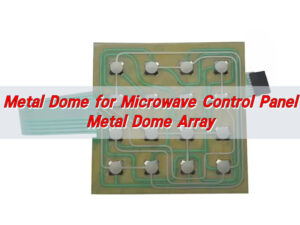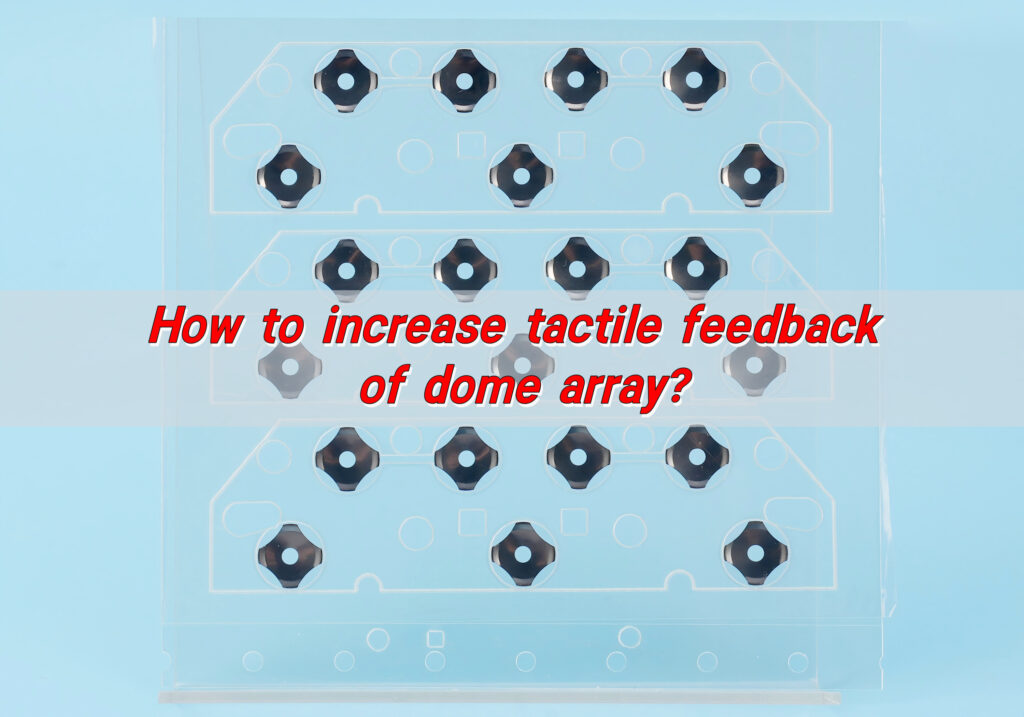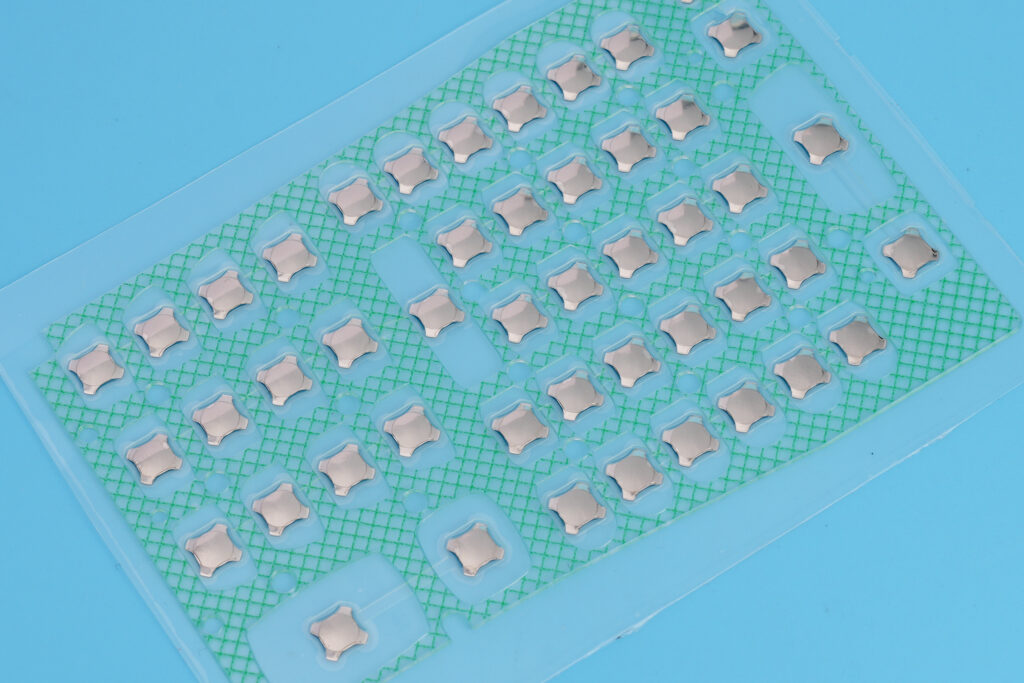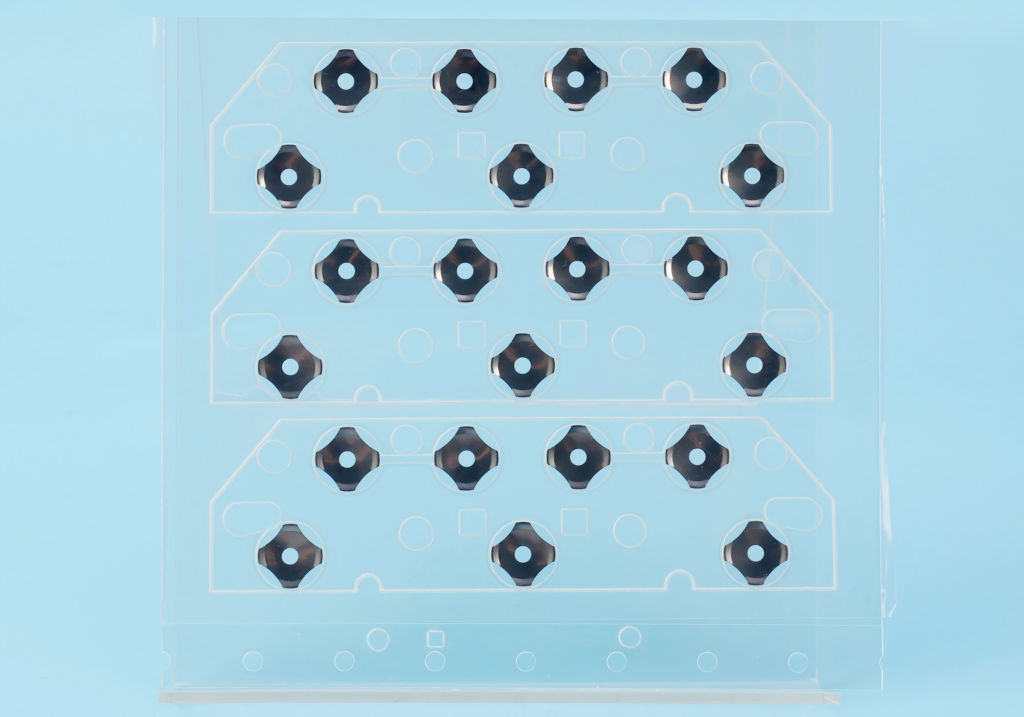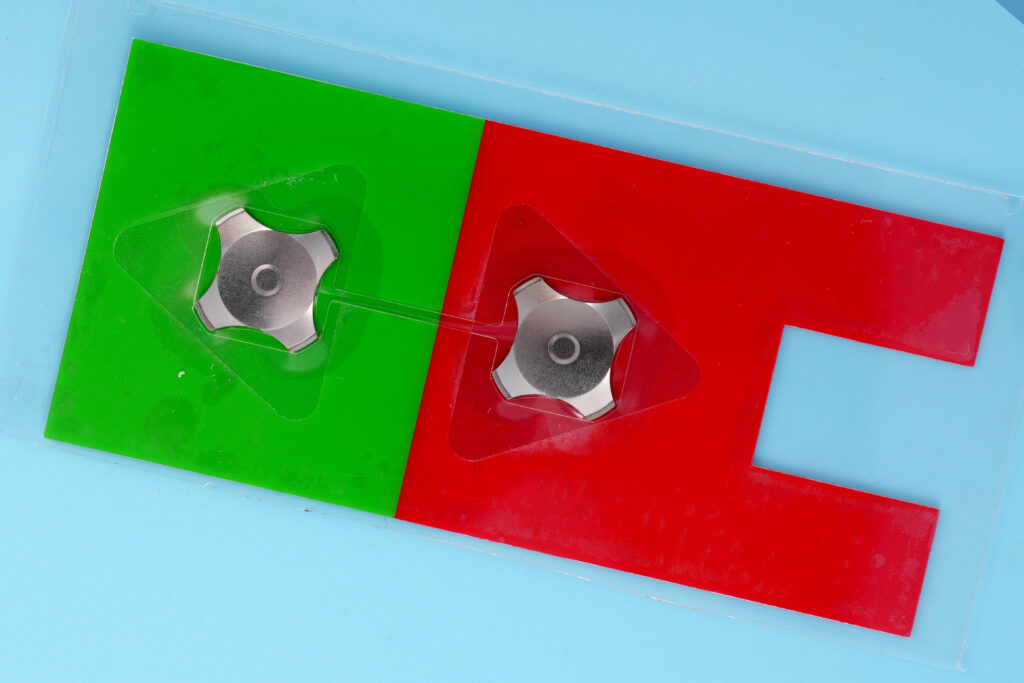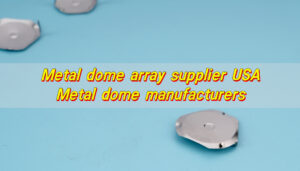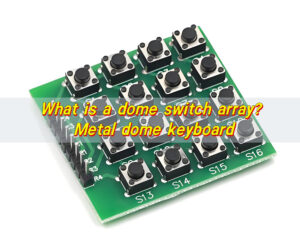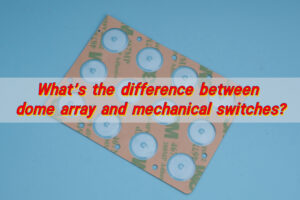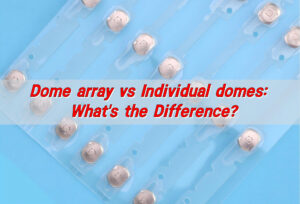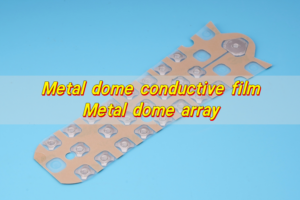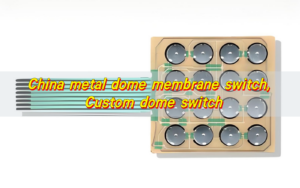To increase the tactile feedback of a dome array, start by optimizing the dome’s material and thickness. Stiffer or thicker domes produce a stronger snap, while flexible alloys allow a softer yet distinct feel.
The dome’s shape and height also matter—triangular, round, or square designs collapse differently, affecting feedback consistency.
Finally, using a supportive substrate or coatings can amplify the tactile sensation without extra force, creating a crisp, responsive user experience.
What is a dome array?
Dome array is a sheet of metal domes or polyester domes mounted onto a circuit board or membrane switch. Each dome acts as a small switch. When pressed, the dome collapses, making electrical contact with the circuit beneath. At the same time, the dome springs back when released, giving a tactile response.
These domes are usually arranged in patterns to create tactile arrays. They can range from small single-button applications to large control panels. The reliability and crisp tactile dome feel make them popular in consumer electronics, industrial equipment, and medical devices.
Unlike simple flat keypads, dome arrays bring a mechanical sensation to every press. The response is immediate and unmistakable. This physical confirmation reduces errors and builds confidence in operation.
What are the benefits of tactile feedback?
Tactile feedback is more than just a click. It provides assurance, efficiency, and satisfaction. When users press a tactile dome, the feedback tells them the command has been received.
This feedback shortens reaction time. For example, in medical devices or control panels, quick tactile response reduces mistakes. In consumer products, it enhances comfort. A positive tactile feedback example is the way a game controller button feels when clicked—fast, reliable, and responsive.
Another benefit is durability. Properly designed tactile arrays withstand thousands, even millions, of presses. The crisp tactile dome click continues to assure users with every interaction.
From phones to remote controls to diagnostic machines, tactile feedback improves trust. It brings clarity to communication between human and device.
How dome arrays are made?
The making of dome arrays combines precision engineering with material science. First, domes are stamped or formed using stainless steel. Each dome must be uniform in size and shape to guarantee consistent tactile response.
Next, the domes are positioned on an adhesive sheet or spacer layer. This sheet aligns the domes over the contacts on the printed circuit board. Accuracy is crucial here.
Finally, the dome array is laminated or sealed. Protective films may be added to prevent dust and moisture from reducing tactile response.
Which materials improve tactile dome performance?
Materials matter. Metal domes are most common. Made from stainless steel, they provide sharp tactile response and long life. Their resilience allows millions of actuations without losing snap.
Surface coatings also influence performance. Gold-plated contacts improve conductivity and reduce wear. Nickel coatings enhance corrosion resistance. Even adhesives play a role—high-quality adhesives prevent dome drift, keeping tactile feedback consistent.
The combination of dome material, coating, and substrate determines how tactile arrays perform.
What are the implications of a dome array without tactile feedback?
Imagine pressing a button and feeling nothing. No click. No confirmation. That is what happens when dome arrays lose their tactile feedback.
Without tactile response, users second-guess every action. Did the press register? Should they press again? In fast-paced settings like medical monitoring or industrial controls, the lack of tactile feedback can cause serious inefficiency.
Even in consumer electronics, the absence of tactile domes reduces satisfaction. Think about a remote control button that feels mushy. It weakens the product’s quality perception. Over time, users may abandon such devices.
In short, tactile feedback is not optional. It’s a vital feature that makes tactile arrays valuable.
What factors affect tactile feedback of dome array?
Several factors shape how tactile domes respond.
- Dome height and shape: Taller domes often produce sharper tactile response.
- Material stiffness: Stronger metals give more snap. Softer materials feel less crisp.
- Force required to collapse: Domes are generally selected based on the driving force..
- Surface coatings: Poor coatings reduce smoothness and increase wear. High-quality coatings improve tactile response.
- Environment: Dust, humidity, or temperature changes affect tactile arrays.
These factors work together. Small design changes can significantly affect tactile feedback, so BEST Technology thoroughly tests the domes before use.
How to increase tactile feedback of dome array?
First, choose the right dome shape. Conical or four-leg domes usually offer stronger tactile response than flat domes.
Second, adjust actuation force. A dome that requires slightly more force can provide stronger tactile feedback. Too much force leads to fatigue.
Third, focus on surface treatment. Metal domes with precise coatings not only improve conductivity but also enhance tactile response.
Fourth, optimize adhesive layers. A dome that shifts or lifts over time weakens tactile feedback. Strong adhesives secure domes firmly, keeping tactile response consistent.
Fifth, add protective films. Films shield domes from moisture, dust, or oils from human fingers. This preserves tactile feedback even after extended use.
By combining design precision, proper materials, and environmental protection, BEST Technology can significantly increase tactile feedback of dome array systems.
Where is the tactile feedback of dome array applied?
Tactile feedback is everywhere. Dome arrays are used across industries where precise user interaction matters.
In consumer electronics, they power remote controls, mobile devices, and wearables.
In medical equipment, tactile arrays improve accuracy. Nurses and doctors rely on tactile response for critical devices where visual attention may be elsewhere.
In industrial controls, tactile feedback reduces errors. Operators can control heavy machinery with confidence, even while wearing gloves.
In automotive systems, tactile domes enhance safety. Drivers receive physical confirmation from dashboard buttons without looking away from the road.
In gaming and entertainment, tactile arrays enrich experience. Players demand instant tactile response for quick, repeated inputs.
Conclusion:
By selecting the right dome material, optimizing the design, and protecting the dome from wear and tear, BEST Technology can enhance tactile feedback.
If you are seeking high-quality tactile dome solutions or want to explore custom tactile arrays for your products, contact us today at sales@metal-domes.com


